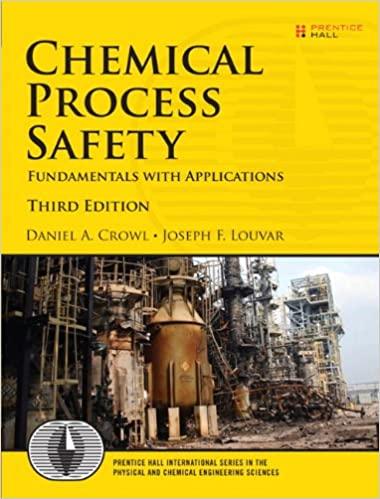Question
Ammonia is synthesized from hydrogen and nitrogen. The synthesis gas is usually produced from hydrocarbons. The most common raw materials are oil or natural gas;
Ammonia is synthesized from hydrogen and nitrogen. The synthesis gas is usually produced from hydrocarbons. The most common raw materials are oil or natural gas; though coal, and even peat can be used. When produced from natural gas, the synthesis gas will be impure, containing up to 5 per cent inerts, mainly methane and argon. The reaction equilibrium and reaction rate are favoured by high pressure. The conversion is low, about 15%. After the removal of ammonia produced, the gas is recycled to the converter via the compressor. This plant consists of a compressor to compress the feed and recycle gas, a feed preheater to heat the stream from the compressor using the converter product stream, converter (reactor) operating at 350 bar, and a refrigerated system (heat exchanger/condenser) to condense out the ammonia product from the converter product stream. A purge is taken from the recycle loop to keep the inert concentration in the recycle gas at an acceptable level. Process data: Composition of synthesis gas is shown in table 1. Table 1: Composition of synthesis gas Compound Mole % Nitrogen (N2) 24.5 Hydrogen (H2) 73.5 Methane (CH4) 1.7 Argon (Ar) 0.3 The operating temperature and pressure condenser is -28oC and 340 bar. The inert gas concentration in recycle stream must not be greater than 15 mole%.
write a literature review regarding this statement
Step by Step Solution
There are 3 Steps involved in it
Step: 1

Get Instant Access to Expert-Tailored Solutions
See step-by-step solutions with expert insights and AI powered tools for academic success
Step: 2

Step: 3

Ace Your Homework with AI
Get the answers you need in no time with our AI-driven, step-by-step assistance
Get Started


